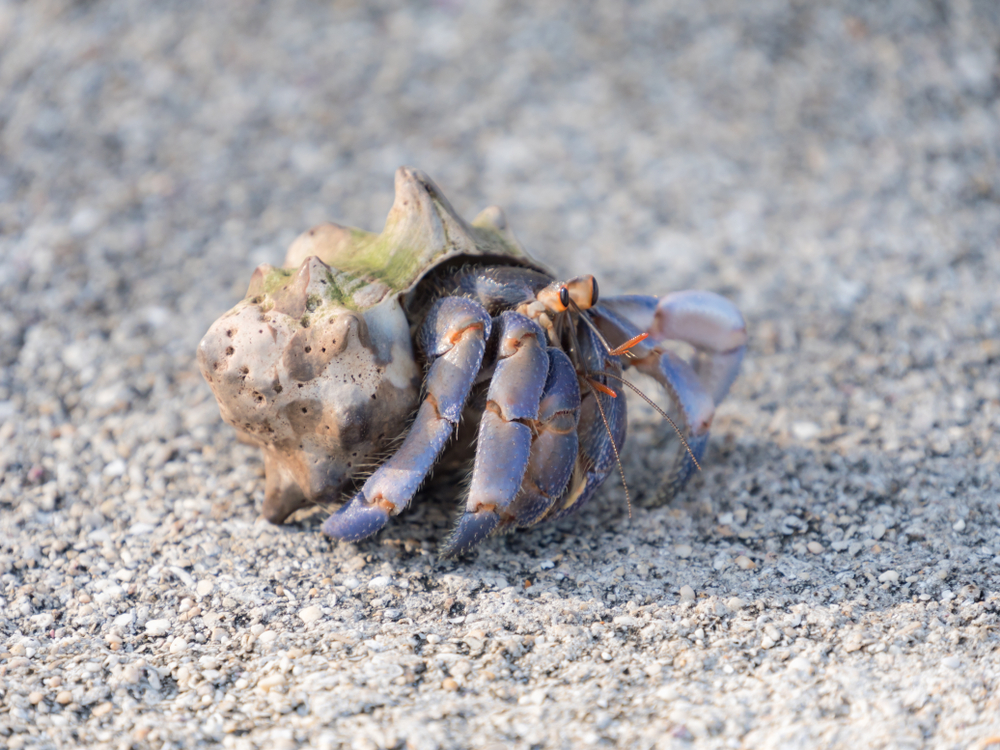The blueberry hermit crab (Coenobita purpureus) comes from Southern Japanese islands where it is also known as the Okinawan blueberry hermit crab. This range extends throughout South East Asia and down to Malaysia. Named for its vibrant blue colouration, this species can also bleed into purples and reds. Youngsters are typically beige or cream, becoming more vibrant with age.
Blueberry hermit crab care
Prospective keepers should be wary of other hermit crabs incorrectly listed and priced as the more expensive and desirable C. purpureus. This is because many other species can come in blue and purple pigmented varieties.

To simulate their natural environment, humidity should be maintained between 70-80%, with a temperature maximum of 30°C. Maintaining humidity is easily done with a substrate of coir and sand, which will also allow the blueberry hermit crab to dig and burrow when kept at a ‘sandcastle’ consistency.
Known to be shell-hoppers, these crabs should be supplied with a choice of housing to swap and change. Experienced keepers suggest oval-shaped openings as they are best suited to their body type. They are known to be quite active and inquisitive creatures, which adds to their charm. C. purpureus should not be housed with other species.
They are generally omnivorous and fresh healthy foods should keep them happy and vibrant. Feeding commercial hermit crab food, as well as non-citrus fruits, select vegetables, nuts and brine shrimp as treats, should give the crab a well-rounded diet.
These crabs have been observed in their natural habitat alongside other hermit species utilising plastic waste items such as bottlecaps for housing, which highlights both the rampant global pollution issue but also the adaptability of some species to their changing environments.
Click here to read another species highlight on Riobamba Marsupial Frog
